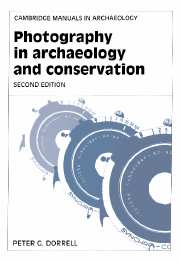Book contents
- Frontmatter
- Contents
- List of illustrations
- Preface
- Preface to the second edition
- Acknowledgements
- 1 The early days of archaeological photography
- 2 Basic principles and practice
- 3 Equipment
- 4 Lighting by flash
- 5 Photographic materials, processing and printing
- 6 Architecture and standing monuments
- 7 Survey photography
- 8 Site photography
- 9 Principles of object photography
- 10 Principles of close-up photography
- 11 Ultra-violet and infra-red photography
- 12 Photographing finds
- 13 Flat copy
- 14 Preparation of material for publication
- 15 The future
- References
- Index
6 - Architecture and standing monuments
Published online by Cambridge University Press: 23 December 2009
- Frontmatter
- Contents
- List of illustrations
- Preface
- Preface to the second edition
- Acknowledgements
- 1 The early days of archaeological photography
- 2 Basic principles and practice
- 3 Equipment
- 4 Lighting by flash
- 5 Photographic materials, processing and printing
- 6 Architecture and standing monuments
- 7 Survey photography
- 8 Site photography
- 9 Principles of object photography
- 10 Principles of close-up photography
- 11 Ultra-violet and infra-red photography
- 12 Photographing finds
- 13 Flat copy
- 14 Preparation of material for publication
- 15 The future
- References
- Index
Summary
A good deal of archaeological field photography might be considered to be, essentially, architectural photography. There is no clear dividing line between photographing an excavated stretch of wall two courses high and photographing a cathedral, although the wall could be photographed quite adequately with a 35 mm camera and a standard lens while the cathedral would need a large-format camera and several lenses.
Architecture, along with figure studies and landscapes, is often the subject of photography whose primary purpose is aesthetic, but this chapter is concerned entirely with the recording of architecture as artifact; recording, that is, the shape, texture, sequence of construction and of decay and destruction, and the setting of buildings. At times, of course, architectural photographs can be an accurate record and also aesthetically pleasing – in fact, that is the mark of a good photograph; but to regard a building principally as a pattern of light and shade, or as a setting for Gothick mystery, rarely yields an informative photograph.
An excellent account of the requirements of architectural photography for the Royal Commission for Historic Monuments is given in Buchanan (1983), and a similar account for America in Dean (1981). There are several books dealing with general architectural photography. A well-known example, with splendid illustrations, is Schulman (1977).
The essentials to be recorded are: the shape of the building from all elevations; the ground plan (insofar as this can be recorded without aerial photography); methods of construction and rebuilding, where evidence for these can be seen; materials of construction; interior features; and the setting of the building in its surroundings.
- Type
- Chapter
- Information
- Photography in Archaeology and Conservation , pp. 96 - 108Publisher: Cambridge University PressPrint publication year: 1994



